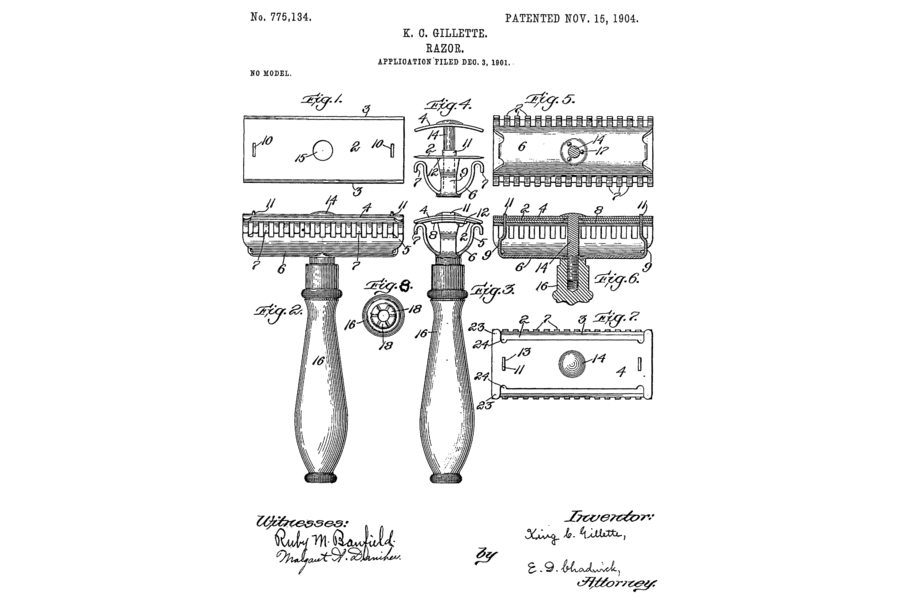
Presented by Gillette
When it comes to shaving, it’s never been easier. If you look back a couple centuries though, a man had to use some pretty interesting items to get all that hair off and now we can do it without any hiccups. Let’s take a trip down memory lane and see how far we’ve really come.
The First Safety Razor
A safety razor adds a slight buffer between the blade itself and your skin. The first time the term was ever used in a patent dates back to 1880, though the design outlined predated the patent. The design had a handle attached at right angles to a head that could take removable blades. The biggest push didn’t come until 1901 when King Camp Gillette introduced a safety razor that used a disposable double-edge blade. The American Safety Razor Company was born and was awarded patents for this design as well as soap and shaving brushes. From 1903 to 1904, sales went from 51 razors to 90,000 and 12 million blades. In 1918, the company’s awarded a military contract during World War I to supply American troops this razor as part of their standard field kits. The troops were allowed to keep their kits and continued using the razor and its disposable blades, as they were accustomed to even after returning home. As they say, the rest is history.
Electric Shaving

Though folks had been trying to get the electric shaver right for decades, it wasn’t until 1928 when retired Army colonel Jacob Schick patented an electric razor that actually gained some traction. In 1931, this electric razor hit shelves and went on to sell millions of units.
Stainless Steel Blades

For any company to be truly successful you have to continuously innovate and that’s exactly what Gillette did. In 1960, they introduced stainless steel blades that featured a higher build quality, lasted much longer, and didn’t rust.
The First Two-Blade Razor

In 1971, Gillette introduced the Trac II, the first twin-blade shaving system. Other brands tried competing by introducing their own variants as well.
Introducing the Mach3

1998 brought the Gillette Mach3, a three-blade safety razor that promised to reduce skin irritation and still deliver a closer shave. It had been in development since the Trac II and took three-quarters of a billion dollars of R&D to bring to life.
Modern Era Shaving

Nowadays, you can walk down the men’s grooming aisle and see four-blade razors and more but everything has to come with reason. Innovation has to be fueled by purpose. Fully disposable razors can now be had from a wide range of brands, and this delivers utility for certain people. The five-blade razors offer more precision and better comfort as well, something that we all can welcome. Gillette’s Fusion ProGlide line has five blades that are thinner and finer, making way for less tug and pull. Think about how far we’ve come. FIVE blades. Twenty years ago, this could’ve been a monologue joke for many late-night TV show hosts. All kidding aside, it’s a tremendous achievement to be able to precisely upgrade to more blades but to do it in a way that adds value and isn’t just a marketing ploy. Men have gone their entire lives doing shaves that probably take longer than they should. In a recent film, there was a scene showing a man talking about how he used to be an architect and helped connect two neighboring towns via a bridge, saving commuters over an hour in traveling time back and forth from work. When the math was calculated, it saved millions of hours for the people in both towns each year, which really makes you think about what even saving a few minutes shaving can do when you zoom out a little and look at the bigger picture.
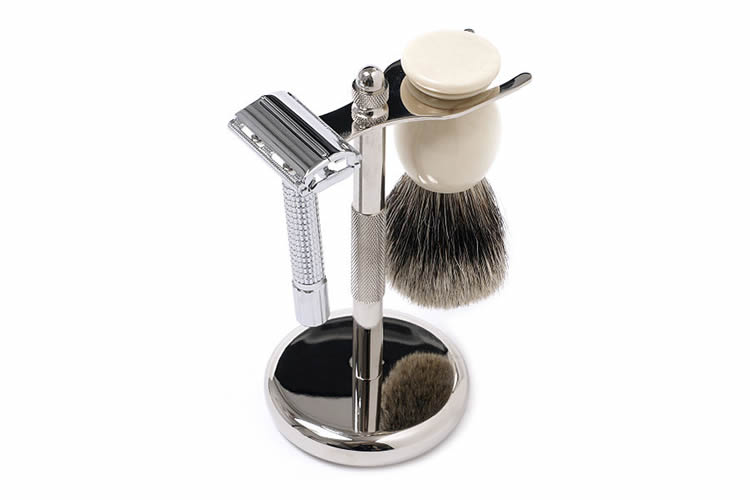
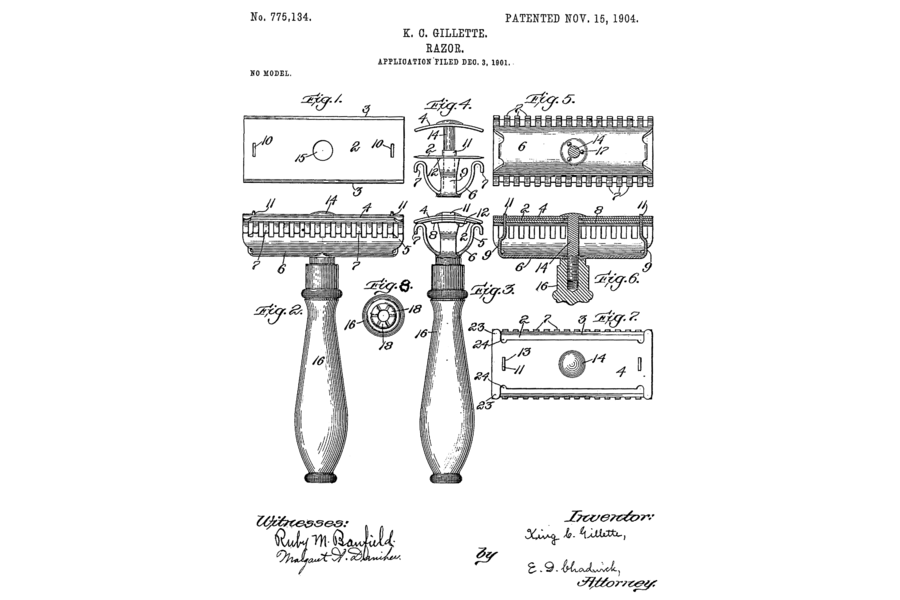


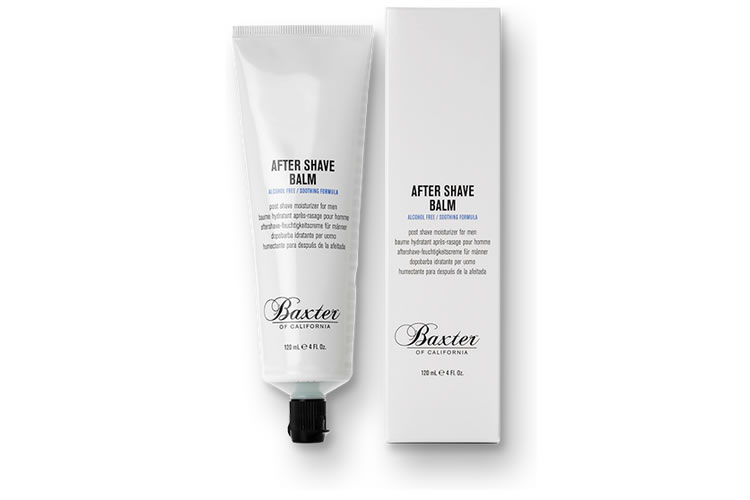



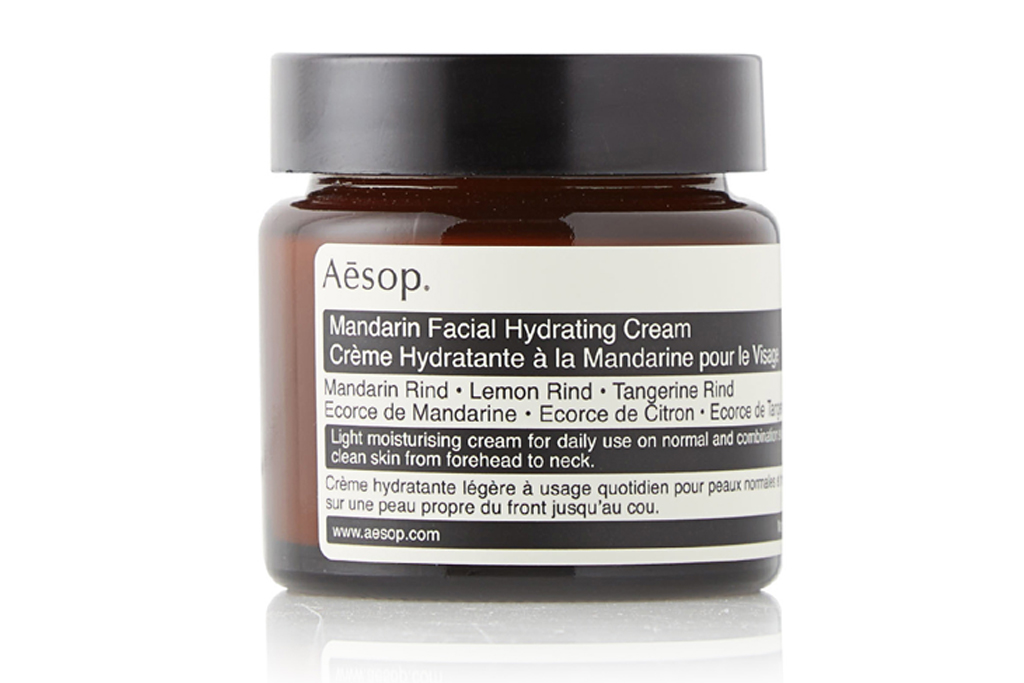



Having used Gillettes products for years, I can say that they’re pretty rubbish. Especially when you factor in the absurd cost